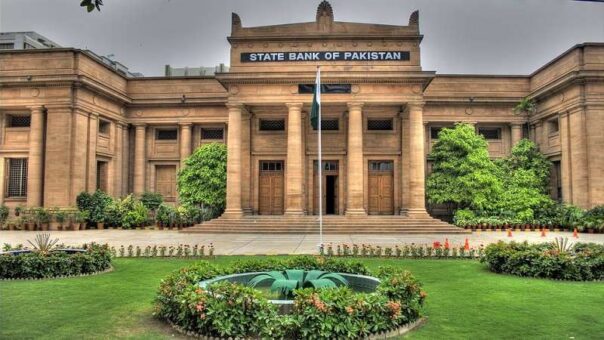Karachi, March 18, 2024 – The State Bank of Pakistan (SBP) has announced the decision to maintain the benchmark policy rate at 22 percent, citing concerns about the risk of inflation uptick in the country.
At its meeting on Monday, the Monetary Policy Committee (MPC) of the SBP opted to keep the policy rate unchanged, emphasizing the need for a cautious approach to tackle inflationary pressures. The Committee noted that while inflation has begun to decline noticeably from the second half of fiscal year 2024, the level remains high, and its outlook is susceptible to risks amidst elevated inflation expectations.
The decision to maintain the policy rate at 22 percent aims to bring inflation down to the target range of 5 – 7 percent by September 2025. This target underscores the SBP’s commitment to stabilizing prices and ensuring macroeconomic stability in the country.
Since the previous MPC meeting, several key developments have influenced the macroeconomic outlook. The data indicates a moderate pick-up in economic activity, primarily driven by a rebound in agriculture output. Additionally, the external current account balance has shown improvement, contributing to the maintenance of foreign exchange reserves despite weak financial inflows.
However, inflation expectations among businesses have shown a steady increase since December, while those for consumers have also inched up in March. Global commodity prices have remained relatively benign, but oil prices have increased due to ongoing tensions in the Red Sea region.
In terms of the real sector, the MPC expects a moderate recovery in economic activity in fiscal year 2024, with real GDP growth projected to remain in the range of 2 – 3 percent. The agriculture sector is anticipated to be the key driver of this growth, supported by favorable crop conditions and higher output prices.
On the external front, the current account deficit narrowed, largely owing to improvements in trade balance driven by increased exports and subdued imports. Workers’ remittances have been rising consistently, supported by incentives and regulatory reforms.
Fiscal consolidation efforts continue, with the primary surplus improving during the first half of fiscal year 2024. However, high debt levels and increasing reliance on costly domestic financing have led to an expansion in the overall fiscal deficit.
In terms of money and credit, broad money growth moderated, while currency in circulation declined. These trends are seen as positive for the inflation outlook.
Headline inflation registered a considerable decline in February, reflecting various factors including contractionary monetary policy, fiscal consolidation, better food supplies, moderating global commodity prices, and favorable base effect. However, adjustments in administered energy prices continue to contribute to inflation directly and indirectly, posing risks to the near- and medium-term inflation outlook.
Given these considerations, the MPC deemed it prudent to maintain the current monetary policy stance at this stage. The decision aims to balance the objectives of stabilizing prices, supporting economic growth, and ensuring overall macroeconomic stability in Pakistan.
